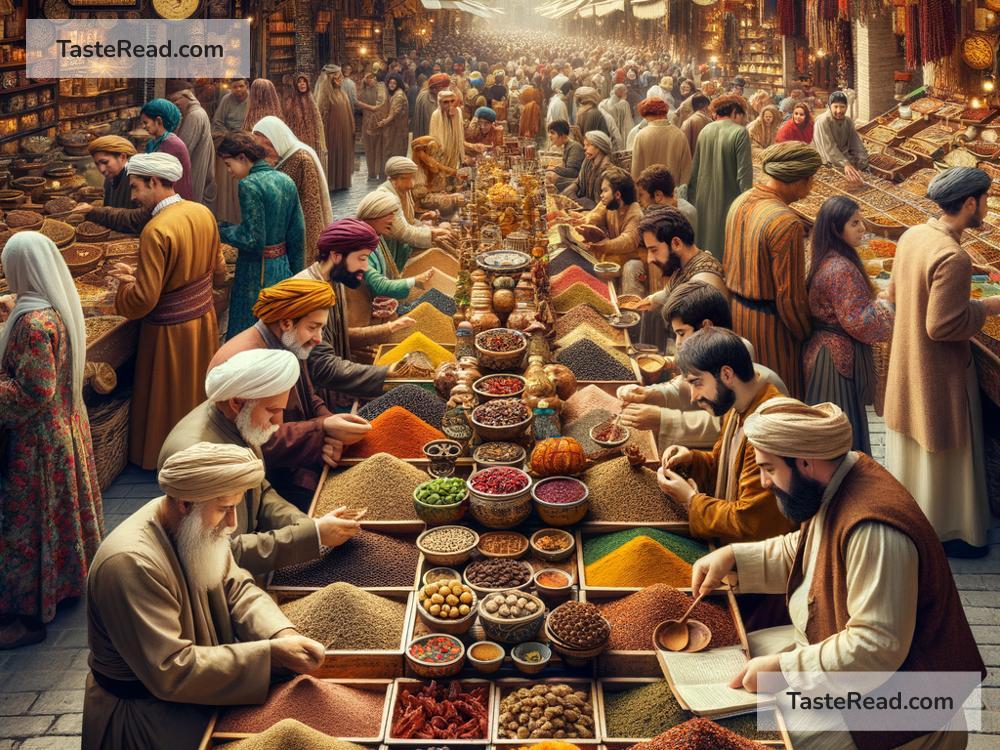The Culinary Influence of the Silk Road
The Silk Road was one of the most important trading routes in history. It stretched thousands of miles, connecting countries from China to Europe. Merchants, travelers, and explorers used this route for many centuries, carrying goods like silk, spices, tea, and precious metals. But the Silk Road wasn’t just a way to exchange goods; it was a path for exchanging ideas, cultures, and flavors. The foods we eat today and how we cook them have been shaped in large part by the culinary influence of the Silk Road.
What Was the Silk Road?
The Silk Road was more than just one road. It was a network of trade routes that moved through deserts, mountains, and cities. It began during China’s Han Dynasty around 130 BCE and lasted until about the 15th century, when ocean trade became more popular. Along these routes, traders interacted with people from different lands, sharing their traditions, customs, and, of course, their foods.
The Silk Road wasn’t just about silk—though silk was highly valuable. Spices like cinnamon, black pepper, and saffron traveled along the Silk Road, too. Fruits like apricots, figs, and pomegranates also became popular because of these connections. In many ways, the Silk Road helped to make the world a tastier place.
The First Global Kitchen
Imagine a world before refrigerators and grocery stores. People in different parts of the world often ate what was grown near them. But thanks to the Silk Road, ingredients from faraway lands started to mix together. This created exciting new recipes and culinary traditions.
For example, noodles from China influenced Italian pasta. Some historians believe that Marco Polo, the famous Venetian traveler who explored the Silk Road, brought pasta-making knowledge back to Italy after his travels in Asia. Whether this story is true or not, it’s clear that the love for noodles spread across cultures, creating dishes like Chinese stir-fried noodles, Italian spaghetti, and Middle Eastern vermicelli.
Another example is spice trading. Spices like saffron, cinnamon, and cardamom made their way across the Silk Road to Europe, the Middle East, and Africa. These spices added flavor to food and helped preserve it. Different regions created unique blends of spices, like garam masala in India and ras el hanout in North Africa. Without the Silk Road, many of the world’s most iconic spice blends wouldn’t exist.
Sharing Food Traditions
The Silk Road wasn’t just about ingredients—it was also about sharing cooking techniques and food traditions. In Central Asia, people learned how to make flatbreads like naan and pita that are still popular today. These flatbreads became a staple food across many regions, often used to scoop stew or wrap meat and vegetables.
Another tradition shared through the Silk Road was fermenting foods. Yogurt, pickles, and kimchi all rely on fermentation techniques that traveled across the trade routes. Fermented foods not only tasted great but also lasted longer, making them valuable for travelers.
Even the idea of tea-drinking spread along the Silk Road. Tea originated in China, but it became a beloved drink in places like Persia (modern-day Iran) and Europe. Travelers brought their tea traditions with them, and the world embraced this soothing beverage.
Cross-Cultural Dishes
Many of the dishes we enjoy today reflect the blending of cultures that the Silk Road made possible. Here are a few examples:
-
Pilaf (or Plov) – Pilaf is a flavorful rice dish popular in countries like Uzbekistan, India, and Turkey. This dish uses rice, spices, meat, and vegetables, and its variations differ depending on local ingredients. Pilaf shows how different cuisines influenced each other, thanks to the Silk Road.
-
Dumplings – Dumplings exist in many cultures, from Chinese dumplings to Italian ravioli to Russian pelmeni. The concept of stuffing dough with fillings like meat and vegetables traveled across the Silk Road.
-
Baklava – This sweet dessert made with nuts, honey, and flaky layers of pastry has roots in Central Asia and the Middle East. Baklava is proof of how shared ingredients created new culinary masterpieces.
-
Kebabs – The idea of cooking meat over an open flame and spicing it came from Central Asia. Kebabs became popular in the Middle East and Europe, influencing dishes like Greek souvlaki and Indian tandoori skewers.
Lasting Legacy
The Silk Road may no longer exist as a trade route, but its influence on global cuisine is everywhere. Thanks to the Silk Road, we enjoy food that mixes flavors and techniques from all corners of the world. Whether you’re eating sushi in Japan, pasta in Italy, or curry in India, you’re experiencing the legacy of the Silk Road.
Food is a universal language, and the Silk Road helped people from different cultures communicate through their meals. It created more than just delicious dishes—it brought people together. The next time you sit down to eat, think about all the journeys your food may have taken to reach your plate. It’s a story of exploration, connection, and the powerful influence of the Silk Road.


